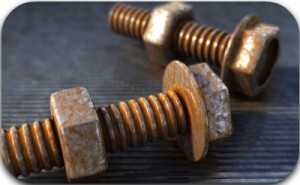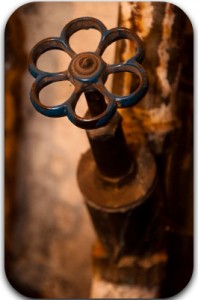Dealing with Oxidation and The Problems of Corrosion
 As metal plating professionals, we have issues dealing with oxidation on a regular basis. From tarnished silver to rusted steel, we’ve seen just about every type of metallic decomposition you can imagine. So why is this issue such a frequent occurrence? The answer lies in the fact that almost every metal is vulnerable to oxidation and before moving forward, we will explain why.
As metal plating professionals, we have issues dealing with oxidation on a regular basis. From tarnished silver to rusted steel, we’ve seen just about every type of metallic decomposition you can imagine. So why is this issue such a frequent occurrence? The answer lies in the fact that almost every metal is vulnerable to oxidation and before moving forward, we will explain why.
What is Oxidation?
Oxidation is a part of the natural process we call corrosion where metals are transformed (and usually destroyed) by chemical interactions with their surrounding environment. Typically, this interaction occurs at the metal’s surface when electrons move from the metal to oxygen particles in the air. The combination creates negative oxygen ions capable of breaking through the metals surface. This penetrations is what causes an oxide layer to develop on a metals surface resulting in blistering, flaking, rust, and deterioration.
Why is this a Problem?
Due to the modern world’s dependence on refined metals, dealing with oxidation has become a major headache. As a matter of fact, based on a study conducted by the Federal Highway Administration (FHWA), the corrosion of metal impacts almost every industry in the U.S. causing over $250 billion in annual replacement and repair costs. The most effected industries include:
1. Utilities (35%)
2. Transportation (22%)
3. Infrastructure (16%)
4. Government (15%)
5. Production & Manufacturing (13%)
Is there a Solution?
Fortunately for us, there are several excellent ways of dealing with oxidation. One of the most prominent being the plating or coating of a vulnerable metal with a more resistant alloy. In general, metallic plating takes many forms including:

Electroplating – Involves the deposition of a metal such as gold, silver, nickel, copper, or tin onto a base metal (substrate) using an electrolysis.
Electroless Plating – Unlike electroplating (as the name suggests), electroless plating does not use an electric current. Instead, a metal finish is applied using a strictly chemical reaction. This method is most commonly associated with nickel plating.
Powder Coatings – Involves the use of metal powder which is bonded to another metal when tumbled in an aqueous solution.
Hot Dipping – Although less common than the other methods on this list, metals may still be dipped into a hot bath of another metal in order to form a protective barrier around the base metal.
Additional Information
For more on oxidation, corrosion, or metal plating visit our blog or contact us at (314) 776-0542
nbsp;
